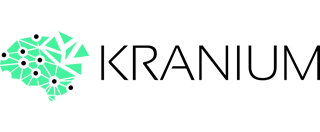In medical diagnosis, every minute counts. Brain tumors are particularly sensitive, delayed identification can lead to serious complications. With no-code machine learning (ML) on the Workbench app, healthcare providers can now deploy trained computer vision models that analyze MRI scans in seconds. These models not only classify tumor types but also highlight affected regions directly on the scan, helping neuroradiologists see exactly what the model sees. The entire solution can be built without writing a single line of code, using Workbench’s intuitive AI model building tools. It’s speed, precision, and reliability, exactly what healthcare professionals need.
1. Why MRI-Based Diagnosis Needs a Boost
MRI scans are critical for diagnosing brain tumors, but the sheer complexity of interpreting them can lead to delays or missed details. Manual analysis relies heavily on the radiologist’s experience, and subtle signs may get overlooked, especially in high-volume settings. By training an ML model on historical MRI scan data, healthcare teams can improve consistency and accuracy. On Workbench, setting this up doesn’t require coding expertise. You can use no-code AI to process and label large volumes of past cases, accelerating diagnosis and offering radiologists a second, tireless pair of eyes.
2. How Workbench Helps Build Smarter Vision Models
Workbench makes AI model building accessible to healthcare professionals and technical teams alike. Users can upload MRI datasets, label tumor types, and train a computer vision model, all through a no-code interface. The platform supports model customization, allowing institutions to train on their own proprietary patient data for highly relevant outputs. Once trained, the model can classify tumors, benign or malignant, and even distinguish between different tumor types. The result: a system tuned for real-world clinical data, delivering insights within seconds that once took hours of manual review.
3. Visual Explanations for Every Prediction
One of the most impactful features of this approach is explainability. Workbench models can mark affected regions on MRI images, showing exactly where the tumor is and why the model flagged it. These image overlays make the model’s decision process transparent and intuitive, which builds trust with clinicians. It’s a leap beyond black-box AI, especially important in healthcare where every diagnosis must be defensible. With this level of visual feedback, neuroradiologists can validate AI predictions quickly and use them to cross-check their own assessments, leading to better outcomes for patients.
4. Better Diagnosis, Less Overhead
Implementing AI in healthcare traditionally means months of model development, expensive consultants, and IT infrastructure overhaul. Workbench eliminates those barriers. Built for custom AI application development, the platform allows hospitals to launch AI-powered diagnostic tools without hiring a full data science team. With no-code machine learning, model deployment is rapid and cost-effective. Hospitals save on operational costs, speed up the diagnostic process, and can reallocate expert radiologists to higher-value cases. This shift not only improves efficiency but can also contribute to higher diagnostic accuracy and fewer false positives.
5. Supporting Scalable, Smarter Healthcare Systems
As patient loads grow and the demand for faster, more accurate diagnostics increases, scalable solutions like Workbench become essential. Hospitals can continuously retrain models with new data, keeping them sharp and clinically relevant. The platform’s collaborative tools allow radiologists, data teams, and administrators to work in sync, streamlining communication and data flow. With AI automation, repetitive scan reviews are handled automatically, allowing human experts to focus on complex cases. In short, Workbench isn’t just a tool, it’s a force multiplier for modern healthcare systems looking to improve service delivery at scale.
Conclusion
Early and accurate brain tumor detection can make all the difference in patient outcomes. With Workbench, healthcare organizations can now deploy powerful computer vision models, without the tech complexity. By combining no-code AI, explainable predictions, and scalable deployment, Workbench empowers medical teams to work faster, smarter, and more confidently. Whether you’re a private clinic or a multi-specialty hospital, integrating AI-driven tumor analysis into your workflow doesn’t have to be a long-term project. With Workbench, it’s a reality you can launch today, and start seeing impact tomorrow.



